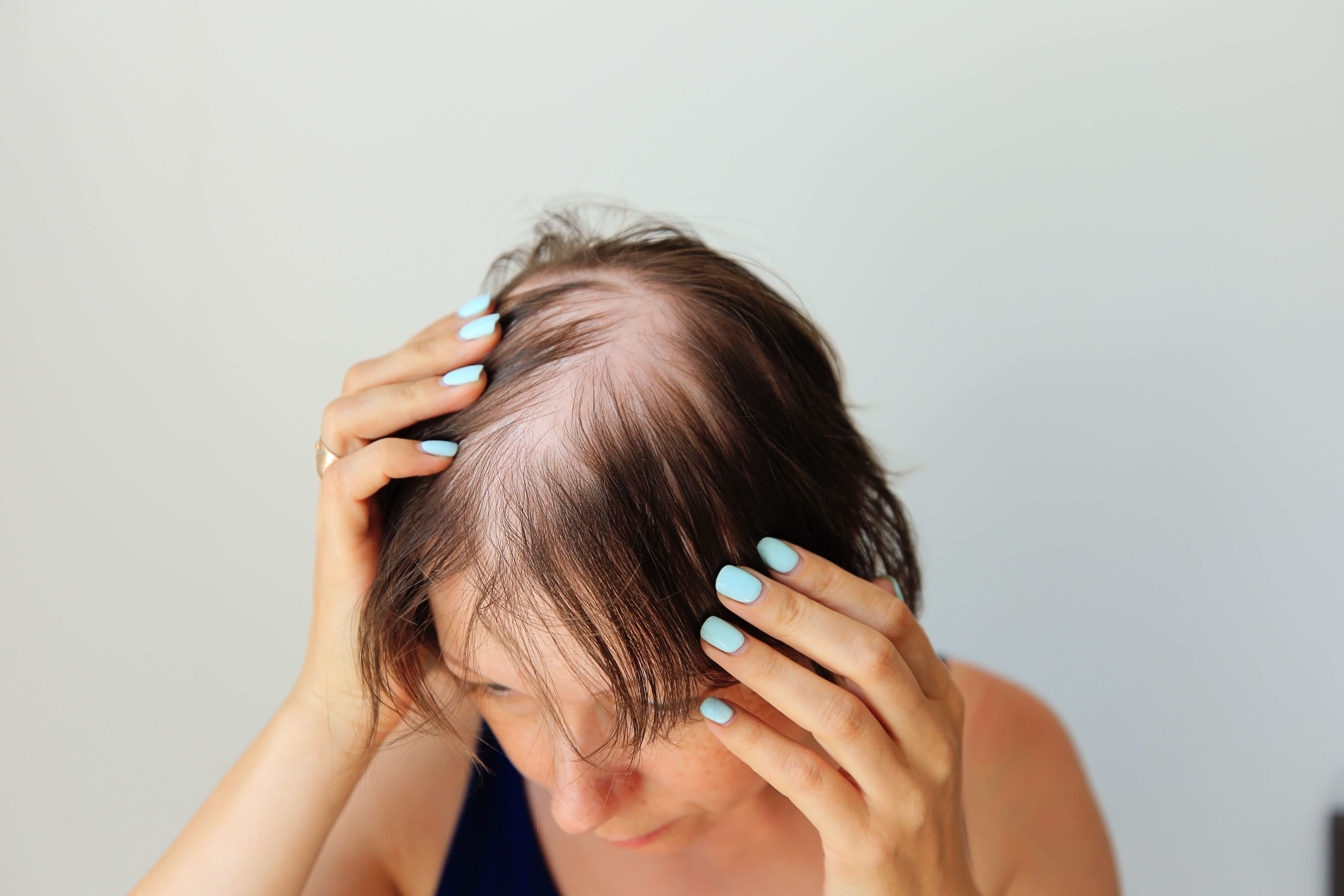- Acne
- Actinic Keratosis
- Aesthetics
- Alopecia
- Atopic Dermatitis
- Buy-and-Bill
- COVID-19
- Case-Based Roundtable
- Chronic Hand Eczema
- Chronic Spontaneous Urticaria
- Drug Watch
- Eczema
- General Dermatology
- Hidradenitis Suppurativa
- Melasma
- NP and PA
- Pediatric Dermatology
- Pigmentary Disorders
- Practice Management
- Precision Medicine and Biologics
- Prurigo Nodularis
- Psoriasis
- Psoriatic Arthritis
- Rare Disease
- Rosacea
- Skin Cancer
- Vitiligo
- Wound Care
News
Article
Light and Laser Therapy is an Effective Alternative for Alopecia Treatment
Author(s):
Key Takeaways
- Light/laser therapies improve hair density and diameter in alopecia areata, androgenic alopecia, cicatricial alopecia, and telogen effluvium.
- The review analyzed 58 studies, focusing on hair regrowth, adverse effects, and treatment satisfaction.
The novel systemic review compared results and adverse events associated with various treatment methods.
Image Credit: © Nadya Kolobova - stock.adobe.com

A recent systemic review evaluated the safety and efficacy of various laser and phototherapy remedies for patients with alopecia.1 It was found that light/laser therapy can serve as an efficient treatment for alopecia, having a positive effect on hair density and diameter across various subtypes including alopecia areata (AA), androgenic alopecia (AGA), cicatricial alopecia, and telogen effluvium.
A comprehensive search was conducted through PubMed, Scopus, Science Direct, and Google Scholar databases and included articles published between January 2010 and September 2023. Articles were assessed based on methodology, sampling methods, the reliability of assessment tools, and objectives of each study. Statistical analysis was then performed.
A total of 965 records were retrieved. After removing duplicates and screening for exclusions, 58 studies were utilized in the final review;26 on alopecia areata, 26 on androgenic alopecia, 5 on cicatricial alopecia, and 1 on telogen effluvium. When extracting information, researchers focused on the amount of hair regrowth/density, the types of adverse effects, and overall levels of treatment satisfaction.
Narrow-band ultraviolet B treatment had varying effectiveness, with a range between 20% and 53% efficacy when administered twice a week for 12 weeks. Similarly, researchers noted varying levels of effectiveness in psoralen ultraviolet A (PUVA) therapy with a range of 25% to 75%.This is comparable to intralesional corticosteroids. The 308-nm excimer laser significantly improved hair density and diameter, mostly in patients with smaller lesions and shorter disease durations, with a mean treatment efficacy of 40% (p < 0.01).
The erbium-glass laser technique increased hair diameter and density both on its own and combined with other therapies, specifically in patients with AGA. Optimal results were found with a minimum of 4 months of treatment (p < 0.01). Thulium laser treatment also saw increases in hair thickness and density. However, after completing treatment, these positive effects gradually decreased in both laser therapies (p < 0.05).
Low-level light/laser therapy (LLLT) had an average efficacy of 50% and was especially effective in reducing scalp oil secretion for female patients (p < 0.01). There were also potential benefits when this method was used in combination with topical minoxidil. However, LLLT did not yield positive results in treating telogen effluvium, with no significant change observed in hair count from baseline (p > 0.05).
The most common adverse events in all treatment methods were scalp tenderness and a warm sensation on the treatment site. Other complications include dry skin, headaches, dandruff, and burning/stinging. Patients treated with PUVA therapy specifically may have experienced pain, hyperpigmentation, itching, blistering, and mild erythema.
About 50% of men and women will experience alopecia during their lifetime.2 Further research is needed to test the efficiency of light/laser therapy for telogen effluvium and cicatricial alopecia. Additionally, continued studies can best identify the ideal candidates for these types of treatments.
“Many types of alopecia have a chronic nature or can lead to permanent complications. Therefore, they need a long period of treatment and control,” the authors wrote. “The used methods in the treatment of alopecia must be available, cost-effective, and have the least adverse effects.”
References
1. Jafari MA, Bazgir G, Hosseini-Baharanchi FS, Jafarzadeh A, Goodarzi A. Efficacy and Safety of Laser Therapy and Phototherapy in Cicatricial and NonCicatricial Alopecia: A Systematic Review Study. Health Sci Rep. 2024;7(11):e70180. Published 2024 Nov 4. doi:10.1002/hsr2.70180
2. Kelly Y, Blanco A, Tosti A. Androgenetic Alopecia: An Update of Treatment Options. Drugs. 2016;76(14):1349-1364. doi:10.1007/s40265-016-0629-5
Newsletter
Like what you’re reading? Subscribe to Dermatology Times for weekly updates on therapies, innovations, and real-world practice tips.











